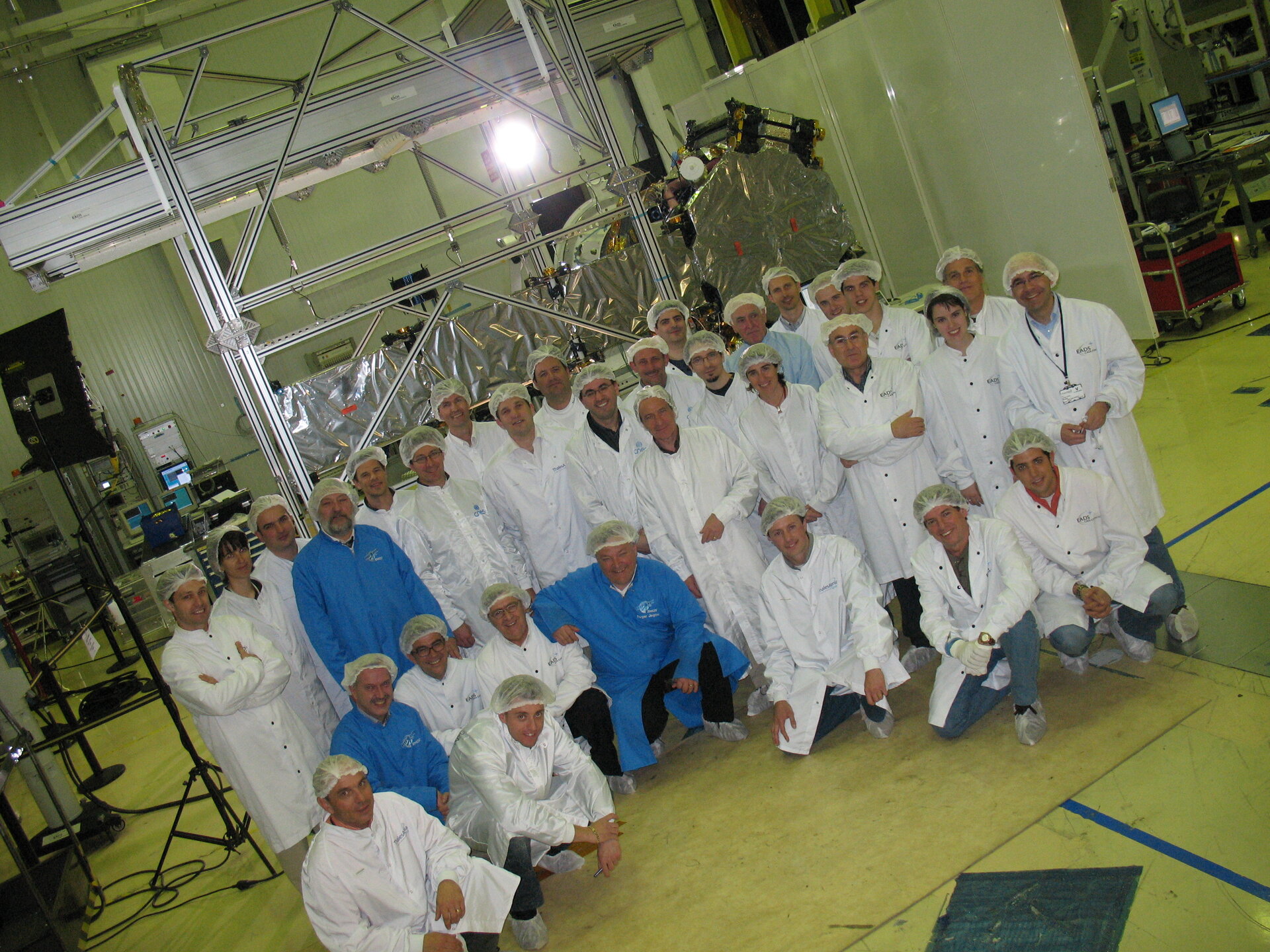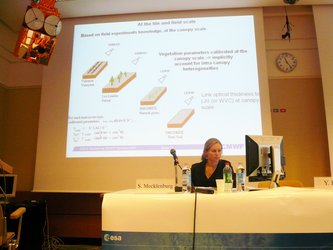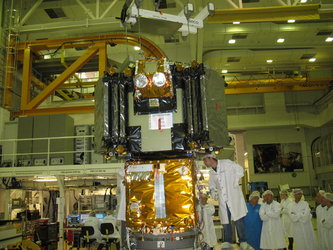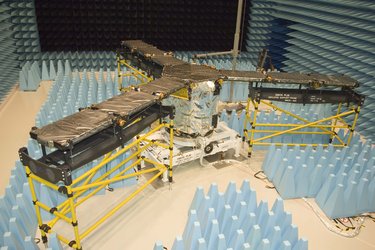SMOS opens arms
As part of the final stage of its testing programme, the last of the three arms that make up the SMOS instrument has been successfully deployed – a tricky operation since the three-metre long arms are not designed to open under the influence of gravity.
ESA's SMOS (Soil Moisture and Ocean Salinity) Earth Explorer mission is currently undergoing final testing at Thales Alenia Space in Cannes, France where it has successfully passed a stringent series of mechanical and thermal tests. However, to ensure that all the acoustic, vibration and thermal vacuum tests had not damaged the delicate mechanism that gently opens the three-segment instrument arms once the satellite has separated from the launch vehicle, each of the arms was tested one by one.
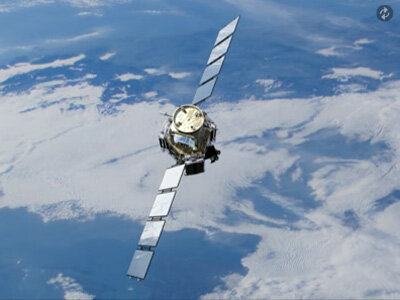
Throughout the testing programme, the three arms of the Microwave Imaging Radiometer using Aperture Synthesis (MIRAS) were folded and tightly clamped together in launch configuration. This innovative instrument is made up of a central hub and three deployable arms, each of which has three segments. The instrument's key elements – 69 antenna receivers, which are capable of observing moisture on the land and salt in the oceans, are equally distributed over the three arms and central structure.
As the arms are designed to open in space – away from the strong pull of the Earth's gravity field, the testing procedure involved the individual segments being attached to a 'zero-gravity jig', which compensates for the force of gravity. Unlike earlier tests, this series of deployment exercises was carried out with 'live pyros'. These are the electro-explosive charges that cut the bolts of the hold-down and release mechanisms once the satellite reaches orbit. The opportunity was then also used to measure the mechanical shocks caused by this relatively violent operation, and compare them to the test levels that had been applied to the subsystems in their qualification programme.
Knowing that the MIRAS arms are in full working order means that final preparations can continue for the launch of ESA's water mission next year.


